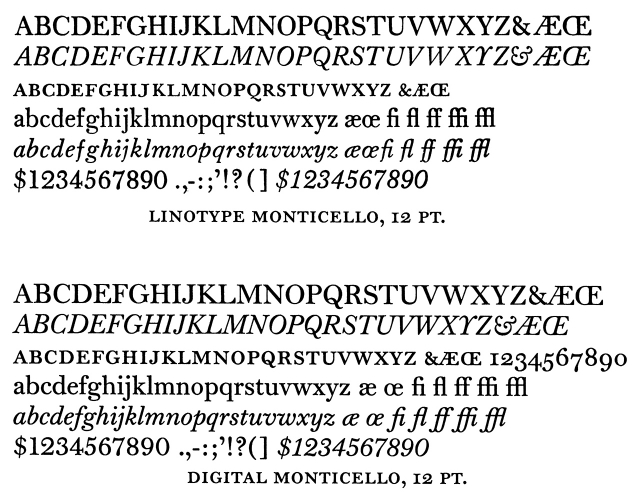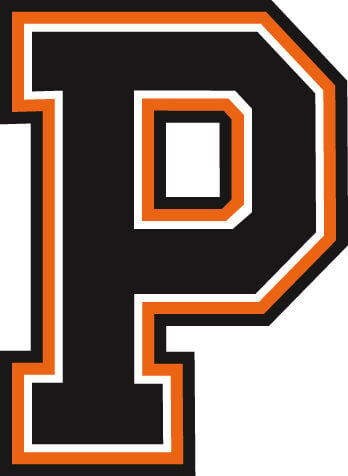Sewoo wtp 150 driver windows 7 64 bit. N A S S A U N O T E S
- Princeton University, using the font, Princeton Monticello: Two-line or “stacked” version: TIGER HEADS: Full face: Profile: These marks are used most often by the Department of Athletics. TIGER-STRIPE P: The initial P filled with black and orange stripes.
- Take a trip into an upgraded, more organized inbox. Sign in and start exploring all the free, organizational tools for your email. Check out new themes, send GIFs, find every photo you’ve ever sent or received, and search your account faster than ever.
- Princeton Monticello is the core typeface for Princeton’s new graphic identity because it is historically related to the University. While rooted in the 18th. 12 Professional Monticello Fonts to Download Please note: If you want to create professional printout, you should consider a commercial font.
- Princeton's official fonts are Princeton Monticello (serif) and Franklin Gothic (sans serif). Current Princeton University employees and students with a valid NetID may request access to download Princeton Monticello (login required) for official University business use in print or on the web.
Type designer to speak on project with the Thomas Jefferson Papers March 31
Finally, in 2002, Princeton University Press turned to Matthew Carter and commissioned him to create a new digital Monticello that could take advantage of modern typesetting systems. The centerpiece of a broadside prepared to show the original Oxford foundry type, the hot-metal Linotype Monticello, and the new digital Monticello together.
A lecture on 'The New Digital Monticello: Reinterpreting a Historical Typeface' is set for 3 p.m. Monday, March 31, in 104 Computer Science Building.
Matthew Carter, one of the foremost type designers in practice today, will give the talk, which is sponsored by Princeton University Press, the Thomas Jefferson Papers and the Friends of the Princeton University Library.
When Princeton University announced plans to publish the complete papers of Thomas Jefferson in 1943 (see 'By the numbers' on page 2), the Mergenthaler Linotype Co. offered to produce a historically appropriate typeface for the project. Christened 'Monticello,' it was a revival of a font crafted in the early 1800s by Binny & Ronaldson, America's first successful foundry, whose types became popular during Jefferson's presidency.
Faced with radical changes in printing technology and with publication of the Jefferson Papers expected to continue until 2026, Princeton University Press commissioned Carter last year to create a digital rendition of the font suitable for the computer age.
The son of a distinguished British historian of typography, Carter went to Holland in his teens to learn the art of cutting punches for the manufacture of handset type and later spent several years designing fonts at Linotype. In 1981 he co-founded Bitstream, an early developer of digital type. He is now a principal of Carter & Cone Type Inc. in Cambridge, Mass.
Carter will be joined by Charles Creesy, director of computing and publishing technologies for the Press and a former editor of the Princeton Alumni Weekly. Creesy will recount the history behind Monticello as revealed by two sets of correspondence: the letters exchanged in the early 1800s between Jefferson and James Ronaldson; and those exchanged in the 1940s between P.J. Conkwright, who would become the Press's most acclaimed book designer, and C.H. Griffith, Mergenthaler's vice president for type development.
International Fest fetes diversity
The University's International Festival -- intended to bring together the numerous ethnic, cultural, regional and performing arts organizations on campus to celebrate diversity and world cultures -- is planned for Monday through Saturday, March 31-April 5.
Activities will include exhibitions, presentations, food and performances to fete diversity, promote understanding and spread knowledge of the ethnic and cultural differences and similarities of the Princeton community.
A film festival will take place at 8 each evening in 302 Frist. The showing of internationally acclaimed films will be followed by a discussion.
A cultural and fashion show is set for 8 p.m. Friday, April 4, on the Frist south lawn. Students will model ethnic clothing from around the world and also will perform dances.
The culmination of the festival will take place on Saturday, April 5. Regional exhibitions will be presented on the Frist south lawn from noon to 5 p.m. They will include interactive exercises, games, souvenirs and student photographs from around the world. Representatives will be on hand to talk about their countries and regions.
The day also will include talks by Princeton faculty members on various world issues, musical performances and storytelling. Beginning at 3 p.m., participants will have an opportunity to sample a wide variety of food from around the world for free.
The International Festival is a collaborative effort of the Consortium of International Student Organizations and the International Center. For more information, visit the center's Web site at http://www.princeton. edu/~intlctr/newweb or call 258-5006.
Global warming is topic for lecture

Fred Krupp, executive director of Environmental Defense, will discuss 'Global Warming and the USA: Sparking Re-engagement' at 8 p.m. Tuesday, April 1, in Dodds Auditorium, Robertson Hall.
Environmental Defense, a nonprofit organization based in New York, represents more than 300,000 members. Since 1967, it has linked science, economics and law to create solutions to society's environmental problems. Krupp has been head of the organization since 1984.
As the international community proceeds to implement the Kyoto Protocol, the United States has rejected the treaty. Krupp is expected to discuss what likely will spark the United States to reengage in the international process, given domestic economic and political conditions.
The talk, designated as the Taplin Environmental Lecture, is sponsored by the Princeton Environmental Institute.
Applebaum talks about his work as a composer and performer

Princeton Monticello Fonts
C omposer, performer, improviser, electro-acoustic instrument builder and jazz pianist Mark Applebaum will discuss his work at 4:30 p.m. Thursday, April 3, in 106 Woolworth as part of the Department of Music's Composers Colloquium series.
Applebaum, an assistant professor of composition and theory at Stanford University, has composed solo, chamber, choral, orchestral and electro-acoustic works that have been performed throughout the United States, Europe and Asia. He has received commissions from Betty Freeman, the Merce Cunningham Dance Company, the Paul Dresher Ensemble, Zeitgeist, MANUFACTURE (Tokyo), the Jerome Foundation and the American Composers Forum, among others.
Since 1990 Applebaum has built electro-acoustic instruments out of junk, hardware and found objects for use as both compositional and improvisational tools. In addition, he performs as a jazz pianist with his father, Robert Applebaum, in the Applebaum Jazz Piano Duo.
For more information, contact Stefan Weisman at mailto:sweisman @princeton.edu
Pasternack to discuss 'No Child Left Behind' law
U.S. Department of Education official Robert Pasternack will present a lecture titled 'No Child Left Behind and Special Education: A View From Washington' at 7 p.m. Thursday, April 3, in Dodds Auditorium, Robertson Hall.
Pasternack is assistant secretary for special education and rehabilitative services. In January 2002, President Bush signed into law the No Child Left Behind Act of 2001, which represents his education reform plan and contains sweeping changes to the Elementary and Secondary Education Act of 1965.
Before joining the federal government staff in 2001, Pasternack served as director of special education for the New Mexico Department of Education. He led the development and implementation of state regulations for special education and created a variety of statewide initiatives designed to improve results for students with disabilities.
The lecture is sponsored by the Woodrow Wilson School of Public and International Affairs, the Education Research Section, Educational Testing Service, the Center for Health and Wellbeing, the Princeton Speech-Language and Learning Center and the Cambridge School.
Monticello Font Free
Photographs of Venice
Princeton Monticello Font Online
'Maschere,' a photograph by freelance artist Maria Pisano, is among the works on display through April 30 in the Program in the Study of Women and Gender Lounge, 113 Dickinson Hall. Hours for the exhibition, titled 'Facades: Photographs of Venice,' are 9 a.m. to 4:30 p.m. Mondays through Fridays.
University Art Museum

The University Art Museum is celebrating the contributions of a group of highly influential Swiss engineers who are widely recognized as the most innovative structural designers of the 20th century in 'The Art of Structural Design: A Swiss Legacy,' an exhibition on view through June 15. The display focuses on the work of Robert Maillart, Othmar Ammann (whose Bronx-Whitestone Bridge is pictured here), Heinz Isler and Christian Menn, as well as on Wilhelm Ritter and Pierre Lardy, the exemplary teachers who educated them at the Federal Institute of Technology in Zurich. David Billington, the Gordon Wu Professor of Engineering and director of the Program in Architecture and Engineering at Princeton, who for the past 25 years has conducted research at the institute, is the organizing force behind the exhibition. A symposium in his honor will take place May 2-3. For more information, call 258-3788 or visit http://www.princetonartmuseum.org

top